Blekinge Museum ViaShow
3D scanning and 3D printing have been increasingly applied in the Cultural Heritage (CH) context in recent years. Several museums are exploring the use of these technologies to digitize artefacts that for different reasons cannot be easily shown to the general public, e.g. sensitive material artefacts or archaeological finds. The 3D models obtained from the scanning can be displayed in different scenarios, for example Virtual Reality (VR) or Augmented Reality (AR) applications. From the 3D models it is also possible to create 3D printed replicas of the objects that can be displayed in museum exhibitions minimizing the risk of damaging the real artefacts.
We worked towards this goal in collaboration with the Blekinge Museum by digitizing three objects. The first two artefacts are the Mjällby crucifix a late-medieval crucifix stored in the Blekinge Museum and its original base located in the Mjällby church. The second object is the remains of an ancient dog skeleton, the Ljungaviken dog, found in Ljungaviken (Sölvesborg) in 2020 and dated around 8000 years ago. The 3D model of the Ljungaviken dog has also been 3D printed creating a replica.
In summer 2021, the 3D printed replica of the dog skeleton has been displayed in a museum exhibition in Sölvesborg (Villa, Vovve & Vassa Flintaspetsar), together with two AR applications showing the 3D model of the dog remains and the 3D model of the whole Mjällby crucifix (crucifix and base). We collected and analyzed visitors experience data to explore the use of these technology in the CH context. The 3D printing work has been done in collaboration with the Innovation Labs at BTH. In addition to scientific publications, the work has been presented to the public in popular science events such as Vetenskapsfestivalen 2022 and the Blekinge Cultural Heritage Forum 2021 .
3D model of the Ljungaviken dog (left). The model has been postprocessed and divided in four pieces to be 3D printed (right):

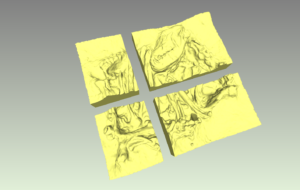
3D printed replica shown at the exhibition (left), AR application showing the Ljungaviken dog model during the exhibition (right):
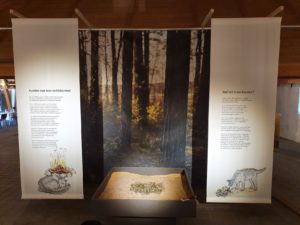
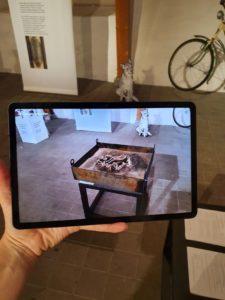
AR application showing the Mjällby crucifix artefact during the exhibition:
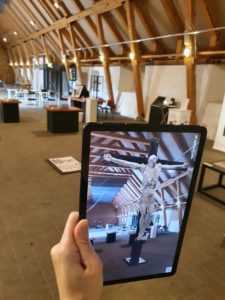
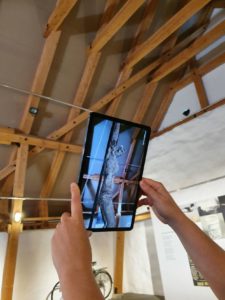
PARTNER TESTIMONIAL:
“Collaborating with BTH within the project has proven really successful for Blekinge museum. The work conducted has mainly concerned how fragile and sometimes unavailable artifacts, placed in the museum storage facility, could be disseminated to the public. BTH has provided all the knowledge and work regarding the visualization and 3D-modelling and the museum curators has contributed with historical facts and how certain objects could be presented. For instance, a large medieval crucifix was put in its original place using augmented reality. We have concluded that the project has given both the museum staff and the museum visitors new insights regarding how digital technology could enhance the museum experience, museum collections and cultural heritage.” Christoffer Sandahl, Head of Collections, Blekinge Museum.
![]()
